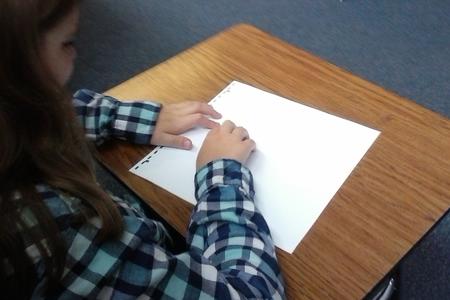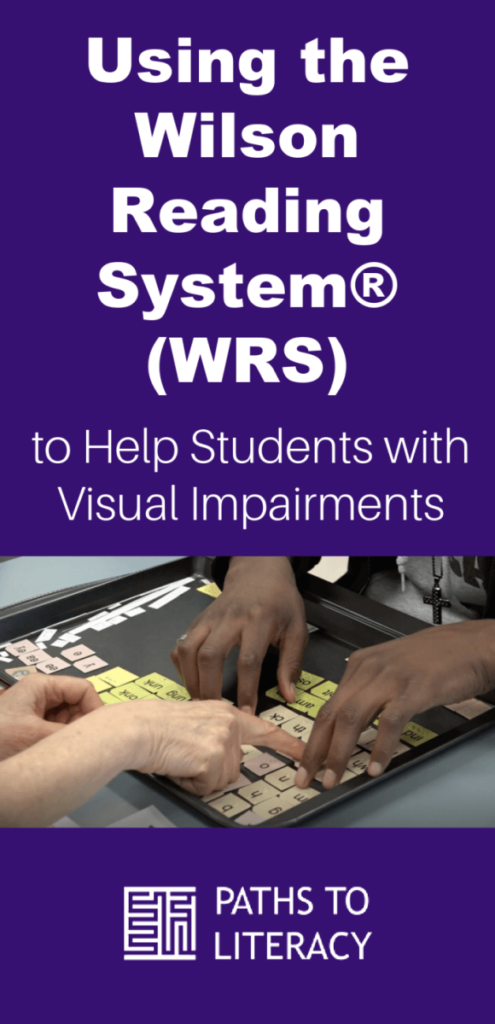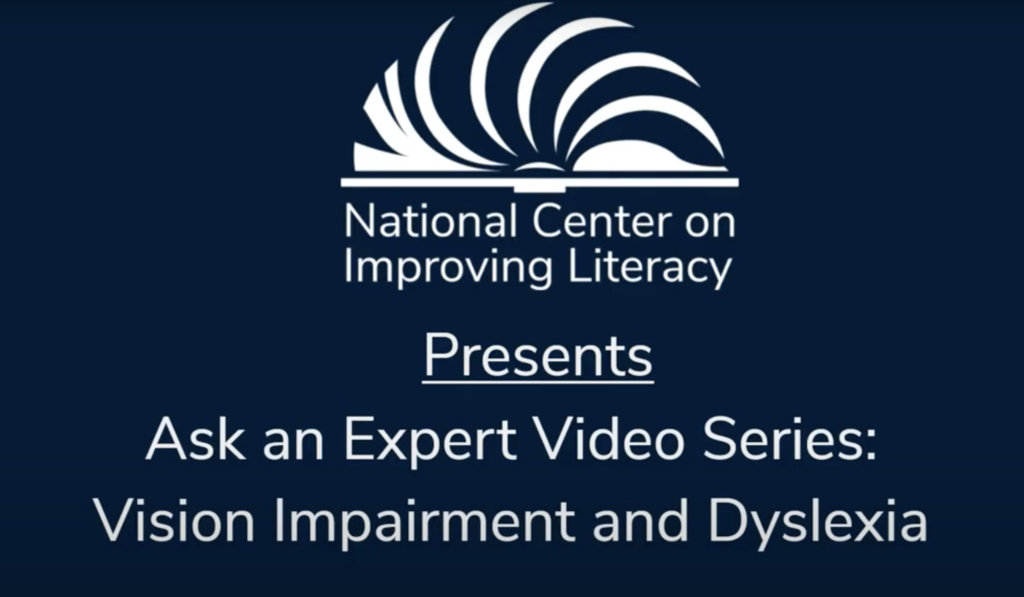Excerpts from “Instructional Strategies”, Making Evaluations Meaningful by Marnee Loftin (2006), Texas School for the Blind and Visually Impaired. Used with permission of the author.
- Instructional Strategies to Increase Fluency
- Instructional Strategies to Increase Comprehension
- Instructional Strategies for Writing
- Instructional Strategies for Mathematical Abilities
Instructional Strategies to Increase Fluency
(ability to read text quickly, accurately and with expression)
General Information
- Fluent readers focus attention on understanding
- Non-fluent readers focus attention on decoding, not comprehension
- Fluency building should be done on the student’s independent, not instructional reading level
Guidelines for Building Fluency
- Check for requisite skills: ability to identify names and sounds of letters; ability to read phonetically regular words; ability to recognize a few sight words
- Calculate fluency rate so progress can be monitored
- Choose appropriate texts: decodable, independent level, reflect the student’s interests
- Model fluent reading by reading to the student 10-20 minutes with expression (phrasing, intonation) while the student follows along
- Use specific teaching strategies such as:
- Partner reading – The teacher, parent or another student reads for about 3 minutes modeling good phrasing and intonation while the student follows along – the two readers then read the same passage together for another 2 minutes – the struggling reader then reads the passage
- Tape assisted reading – Short passages (or sections of a passage) are tape-recorded and the struggling reader follows along with the tape for repeated practice
- Chunking – To emphasize that connected text is divided into meaningful phrases, divide sentences into phrases by using slash marks or more spaces – this allows the student to read shorter chunks of words, then put them together
- Phrase card reading – Similar to chunking, phrases are written on index cards – after reading the phrases several times for mastery, the phrases are then combined to make a complete sentence
- Repeated readings – Reading poetry is an excellent way to reinforce fluency by practicing a poem for class presentation – it is recommended that Poetry Parties be held to practice these repeated readings – Readers Theatre is another excellent way to approach repeated readings – this is an activity in which each student has a portion of a passage to present to the rest of the group – it facilitates fluency by giving each student many opportunities to practice their portion of the presentation – the students can switch scripts and practice with other passages
Instructional Strategies to Increase Comprehension
(ability to gain meaning from text)
General information
- A wide variety of reading (variety of topics and texts) should be provided
- Development of extensive vocabulary should be addressed – simply being able to read a word is not enough – the student must also know what the word means and be able to use it in context
- A variety of comprehension strategies should be utilized
- The generation of questions after reading supports comprehension
Guidelines for increasing comprehension
Before reading
- Read the title and activate background knowledge about topic
- Teach unfamiliar vocabulary
- Establish purpose for reading – for fun or learning
- Preview text – cover, title, text, structure, and picture
During reading
- Use questioning techniques (types of questions from simple recall to more complex analysis of text)
- Use graphic organizers – fill in as you read (these can be done in outline form for Braille readers)
- Use self-monitoring techniques by asking: Does this make sense to me? Do I know what all the words mean? Can I predict what will happen next?
- Use fix-up strategies – re-read problem words/sentences; retell in own words; read ahead a few sentences to use context; connect to previous knowledge
After reading
- Use questioning techniques – Who or what was this story about? – What was the most important event? What was the main idea? – answer who, what, where, when, why and how questions
- Review vocabulary – look up any words still not understood
- Summarize – Write a summary of ten words or less
- Complete and revise graphic organizers
Adapted from: Effective Instruction for Elementary Struggling Readers Who Are Blind or Visually Impaired, Special Education Reading Project (SERP). University of Texas at Austin, College of Education (2003).
Instructional Strategies for Writing
(ability to construct compositions)
General information
- Students should be encouraged to experiment with writing
- Students should have daily opportunities for writing many kinds of texts such as lists, messages to others, poems and stories
- Students should be allowed to write about topics that are personally meaningful
- Students should have a bank of words they can use in writing endeavors
- Students should be taught spelling strategies
- Students need to learn to revise and edit their own writing
Guidelines for developing writing skills
The following mnemonic can be used to assist the student in remembering the components of effective writing:
P – pick a topic or subject
L – list information you want to include (can use graphic organizers)
E – evaluate the list for completeness and proper sequencing
A – activate your writing with a topic sentence
S – supply supporting sentences and details
E – end with a concluding sentence or statement
This can be used when writing a simple paragraph as well as an extended story or report.
Another useful mnemonic can be used for revising and editing writing to check for essential elements:
C – capitalization
O – organization and overall appearance
P – punctuation
S – spelling
Instructional Strategies for Increasing Mathematical Abilities
General information
- Learning disabilities in math and the effects they have on development can vary widely and involve language difficulties, visual-spatial confusion, sequencing problems and long-term memory difficulties
- Since learning disabilities in math may revolve around using language, specific math vocabulary must be explicitly and extensively taught
Guidelines for developing math abilities
- Provide experience with concrete materials because pictorial representations often confuse these students
- Introduce new skills by using many opportunities to practice with concrete examples before moving to abstract uses
- Verbal explanations must be completely accurate and concrete, with as few elaboration’s as possible
- Allow adequate processing time
- Allow use of facts charts
- Permit the student to demonstrate understanding using objects or pencil marks
- Provide small increments of instruction rather than longer sessions – two twenty minute sessions every day are more beneficial than an hour long session every other day
- Teach concepts in small segments
- Verbal information should be broken into smaller steps instead of all at once – present concepts, give directions, ask questions, offer explanations
- Request that the student frequently verbalize what they are doing
- Turn lined paper sideways to serve as columns for organizing work
- Offer strategies for remembering and working through the sequence of steps in solving problems, such as mnemonics or organizers
- Allow use of a large type or talking calculator



